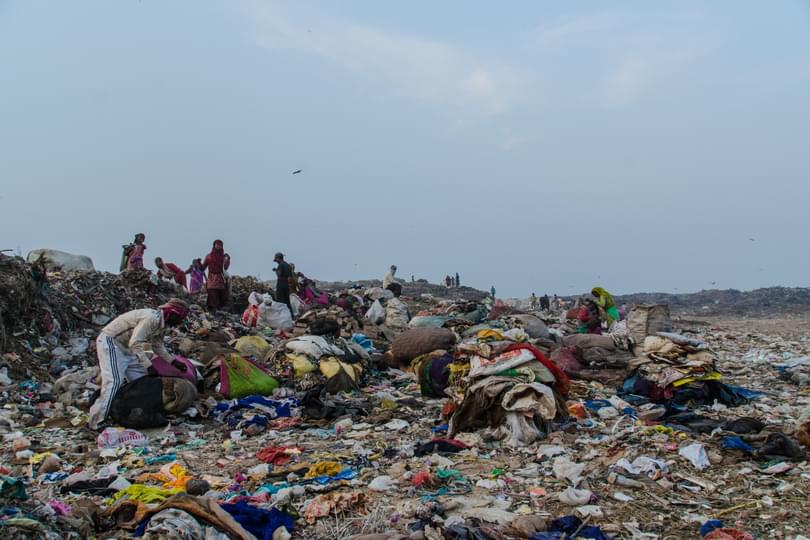
The majority of the population in Delhi lives in the “informal city”, which comprises different forms of unplanned settlements.
It is a city that attracts migrants from the most vulnerable regions of the country. Many of these migrants arrive from areas that are climate-sensitive. These migrant populations escape floods and droughts in their home regions, but on entering the informal city they face new sets of risks and challenges. Inhabiting informal settlements and participating in the informal economy, they carve out a fragile urban belonging based on complex trade-offs.
How can we make sense of such a complex environment?
As two anthropologists wanting to make sense of the complexity of the informal city, we’ve discovered that ‘following’ urban objects, such as drains and plastics, tell us a lot about the informal parts of the city, and their inhabitants. This helps gives a better sense of how informal dwellers – such as migrants – belong to, and shape, the city.
Why drains and plastic?
City drains are often surrounded initially by open space. Migrant people tend to build their homes and communities in these spaces, unwanted and stigmatised by other city dwellers. These marginal spaces become key sites for the urban poor to find a footing in the city and to imagine an urban future. Drains engender dwellings where the residents continue negotiating their legal vulnerabilities and complex health challenges.
Many of these migrants make a living as waste pickers. They sort through the city’s waste to find valuable recyclable plastics and sell them to recycling units that make new bottles or polyester fabrics, generating informal economies.
Looking at these objects provide a more grounded understanding of informality, while also allowing us to grasp how the informal city interacts with the State.
Drains are a way to rationalize the city’s ecosystems. Plastics are a way to rationalize the city’s consumption. The State plans and manages plastics through the banning of particular types of plastics, while drains are managed through regulations that criminalize communities building dwellings along it or making use of open drains ( Bhawani’s earlier blog describes this in more detail).
Through our work we both build on a mosaic of methodologies, comprising ethnographic fieldwork and close readings of policy documents on climate change, drains and plastics. Documenting lived-experience accounts and oral history narratives of the community members, observing their everyday interactions with the State, and a close reading of the texts of key policy documents, are our key approaches on the ground to understand contemporary urban dynamics. The focus on drains and plastics also provide a lens to study how and whether the Sustainable Development Goals are being achieved. Understanding how informal settlement are managed and inhabited is key to making them more equal, sustainable and resilient to today’s challenges.
Another unplanned challenge: COVID19
The COVID-19 pandemic brought to the fore how little we know about cities, especially those parts of cities that are outside formal state control.
The Indian State followed a public health reasoning similar to other governments around the world. But disregarding how cities, with a vast informal population such as Delhi, work led to adverse consequences.
As a matter of fact, in India, the first COVID-19 lockdown triggered a migration crisis that was referred to as ‘the greatest exodus since partition’. In Delhi, in particular, the squatter settlements and the hand-to-mouth livelihoods of their residents triggered a widescale exodus back to their home states. The lockdown turned this public health crisis of the pandemic into a financial and food security crisis, hitting the most vulnerable residents of the city most acutely.
The success of post-pandemic recovery depends on how we fill the gaps the pandemic exposed in our understanding of cities and how they actually work.
More broadly, our limited understanding of informal cities poses a challenge to our ability to assess the inherent resilience of societies, and their limitations. Understanding how formal and informal sectors operate, and how they interact, is crucial to planning inclusive and sustainable cities in future.
Understanding how the hidden ‘artefacts’ of informal cities impact on and with the lives of their communities contributes to creating new ideas to help make cities more equal, sustainable, and better prepared for the urgent challenges of the 21st century.
This blog was written for World Cities Day 2021.
This opinion piece reflects the views of the author, and does not necessarily reflect the position of the Oxford Martin School or the University of Oxford. Any errors or omissions are those of the author.

